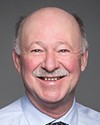That is an evolving situation. We are talking about the roadmaps, specifically the most recent ones. In our presentation, we did not want to go back over 40 years of development. Some things existed beforehand. We still do not have services in French in bilingual medical clinics. We are not there yet. However, we have made a lot of progress at community level and those projects have worked well.
A number of examples come to mind. We started projects on healthy eating, on physical exercise, and the projects have remained in place. We funded that kind of initiative in schools. When we started, for example, students went to a swimming pool every week. The funding stopped after three years, but the schools continued the activity. It created a momentum that has continued since.
We also organized physical exercise sessions for seniors and similar activities through the health network. Since then, two sport activity rooms have been opened, such as on the Port-au-Port peninsula.
These are very rural regions. They have no private fitness centres. The only other services are those that come from the communities themselves. The community managed to get organized and to set up two rooms with sports equipment that people can use year-round at a modest cost. It was that kind of activity that the health network was able to bring to the communities.
As for services in French in institutions, there is a huge amount of work to be done. The work is being done in collaboration with the health network. However, an enormous amount of work remains. We will speak about that again shortly. We have been trying to work on it for two years.
There is one situation peculiar to Newfoundland and Labrador that we will bring up when get into immigration. The French-speaking presence in Newfoundland is aided by the proximity of the Saint Pierre and Miquelon archipelago.



